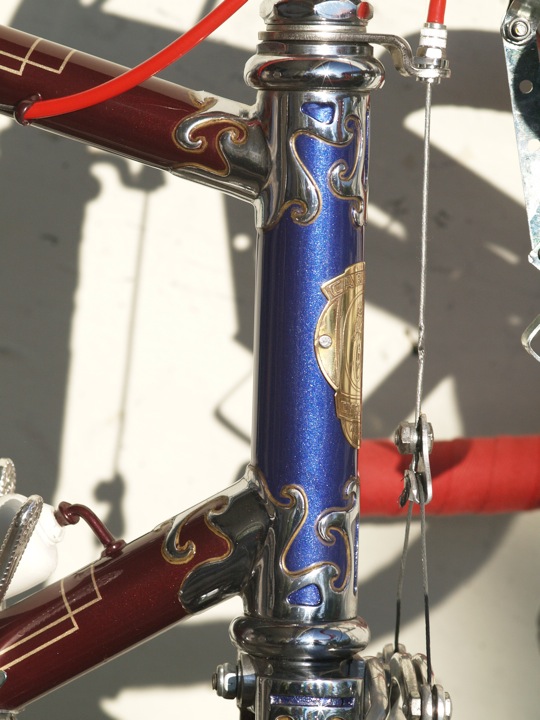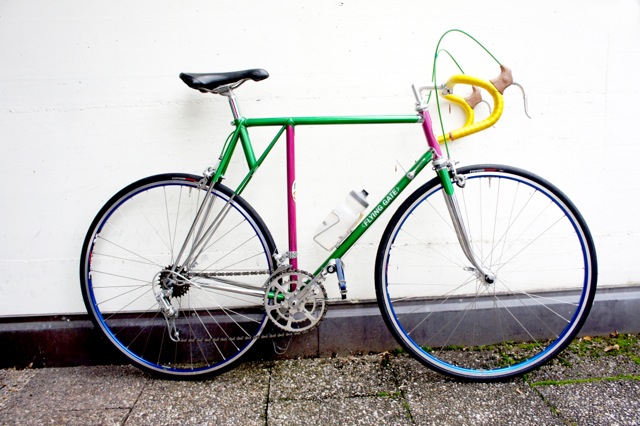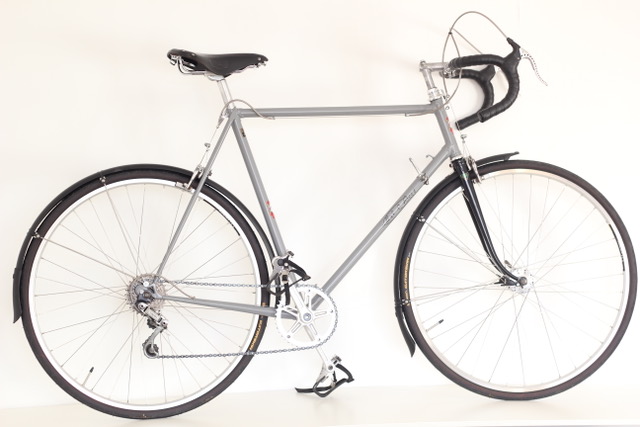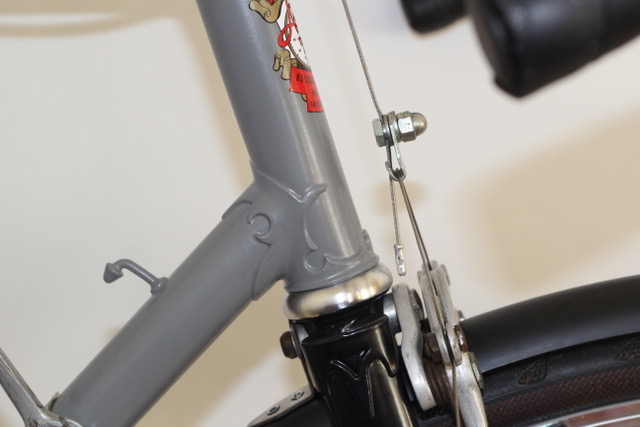Vol. 2, Issue 86 - March / April 2020
Posted: Monday 16th March 2020
I have explained before how we were struggling to keep the Classic Lightweights website going as our systems were going out of date and unsupported for updates, etc.
Attempts to rectify this with a new system for one part of the site would result in systems not ‘talking’ to each other elsewhere and making the situation even worse. What was needed was a massive revamp, which is a major undertaking with thousands of files and images and would require far more facilities than we had. Quite often websites in this position just disappear or stagnate.
I discussed this with Andrew Richman from Chater-Lea (a keen user of the site) and he agreed that Chater-Lea would take on this task which is what is happening at the moment. All of the files have been ‘scraped’ and now work can commence to modify the systems and update everything to make it compatible with modern usage.
When we started the site many of our viewers were still on dial-up connections, if you can remember what that is. Now many users access the information with phones and tablets while on the move and the pages need to be adapted accordingly. The Classic Lightweights site is of course still available for use but new material is on hold for a few weeks while the updates take place.
Meanwhile, here in the UK we seem to have a weather pattern delivering us bad weather regularly at weekends. Our Cambridge VCC section had to cancel the first ride of 2020 due to winds of up to 70mph.
I have just finished a revamp of the drive chain and wheels on Patricia’s Pat Hanlon (Pat Hanlon’s own bike, the last she had built for her company – built by Tom Board). We replaced the Campagnolo double chainset with Stronglight/TA, giving slightly lower gears with a 38T inner ring, and changed the rims from Fiamme sprints to ‘clincher’ rims. We feel that with this configuration the bike will get more use in the hilly rides away from Cambridge. Reading Ride here we come! Ed.
Alan Cycles by Graham Kerr
This all started when I was flicking through my ’76 edition of Riders Aids produced by the Holdsworth company, which was every young and not so young bikers’ bible and combined wish list. In the back few pages I spied a sketchy line drawing of a weird looking frame, called an Alan, made of aluminium of all things. As far as I could gather it had a rather clunky looking rear stay to seat tube affair, really nothing as svelte and streamlined as the shot in stays of my then current racing machine a Cinelli Super Corsa.
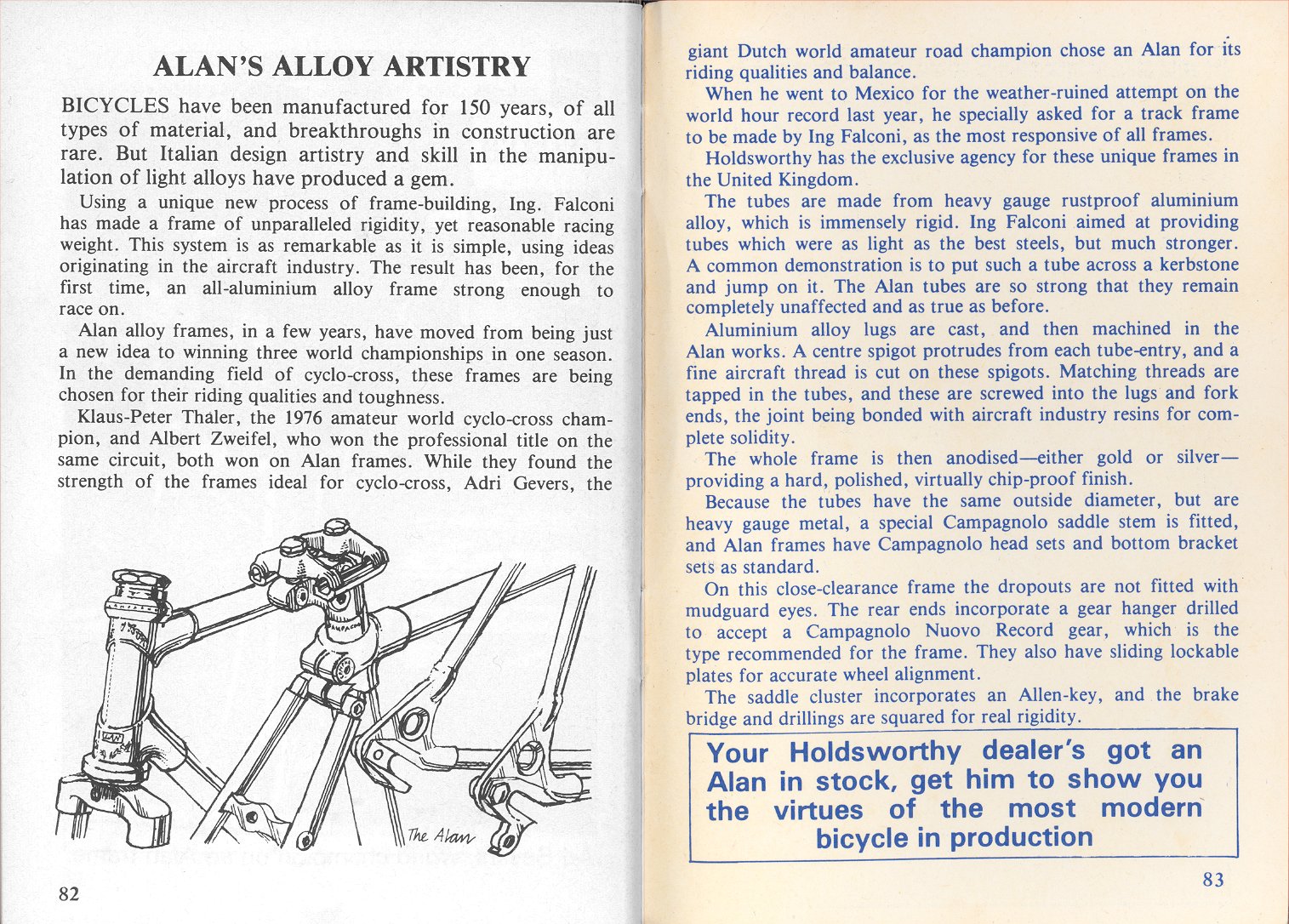
However, a little later and being a keen racer and wishing to sustain my fitness throughout the Winter months, the natural course of action was to have a bash at cyclo-cross and accordingly this meant I should go find a suitable cross machine. A couple of weeks scouring the back pages of the Comic revealed a record model Alan in the correct size which featured cantilever brake fitments, very necessary to give the needed wheel to frame clearances when there was a lot of mud around. And so this was my introduction to Alan frames.
A little bit of history and the Alan marque was founded in 1972 by an engineer who went by the name of Lodovico Falconi and I’m sure he had nothing to do with Falcon cycles UK. However, what gave this chap the idea to make these frames I know not but what he did do was take aluminium tubes, thread the ends, then screw and glue them using 3M aircraft adhesive into pre-forged lugs. The tubes were colour anodised which resulted in a very attractive and hard-wearing finish to the frame. The name Alan comes from the first two letters of Lodovico’s children’s names, being Alberto and Annamaria, and not his mate Al who worked round the corner in the spaghetti shop. Now although Lodovico’s manufacturing procedures were an undoubted success it may just be possible that the principle of this frame manufacture was copied from a previous attempt to construct an aluminium bicycle frame. The history of aluminium bicycle frames goes back to the turn of the century.
Around 1920 there was one serious manufacturer, a Monsieur Pierre Caminade, who produced his Caminargent marque. These were absolutely delightful bicycle frames constructed from octagonal aluminium tubing secured into very ornate and deco style lugs. I did see one of these gems at a Beaulieu auto jumble I was attending a couple of years ago but I couldn’t afford the 5000 Euros they were asking for the bike.
But we digress, so back to Alan and Mr Lodovico moved further into the 21st Century with the introduction of carbon fibre. He utilised Torayca carbon fibre composite tubing in a similar method of construction to the aluminium frames in order to produce his stunning Super Carbonio frames. However, this frameset, as good as it is, still featured aluminium forks. They were quite expensive frames too. In the States the price of a carbon frameset in ’86 was $749, in the UK in ’81 the Super Corsa would have cost you £213. Even now the second-hand prices of these frames stays quite firm.
And were they any good? The comment I used to get was “I bet the frame flexes a lot”. Well, they didn’t and certainly not my very well used track frame which if it did when full gas sprinting would have thrown the chain off right, left and centre, and my road Super Corsa model was my instrument of choice for criteriums due to its’ superb handling. The only problem I ever encountered was when a fork steerer tube decided to part company on the cyclo cross machine, a problem which I feel was my fault to some degree due to my over tightening of the quill style stem ,which created a stress point. I had the aluminium steerer replaced by a steel piece by the good guys at Dauphin cycles up at Box Hill.
There were many variations of the Alan frame. The R30 record Carbonio road, MTB, lady and triathlon editions. A similar selection in aluminium under the Super Corsa title and my personal holy grail – the Titanio edition. The frames are not super light in today’s era of sub kilo pieces. They all tip the scales at around the 1.6kg mark, varying little between styles, size and materials, but in their day they were deemed as super lightweight and a number of continental professional bike teams selected Alan as their instrument of choice. Such was the reputation carried by the Alan frame that other frame manufacturers bought them in then re-badged them to their own marque; these companies being Colnago, Guerciotti, Priori and others. Amongst the pro teams that selected Alan frames for punishment was Teka, which had on their roster the man with the gnarliest pair of legs in the peloton, the Portuguese rider Joaquim Agostino. Oh ,how I wished I could develop legs like his! There was Magniflex and I think Sunair used Alans too.
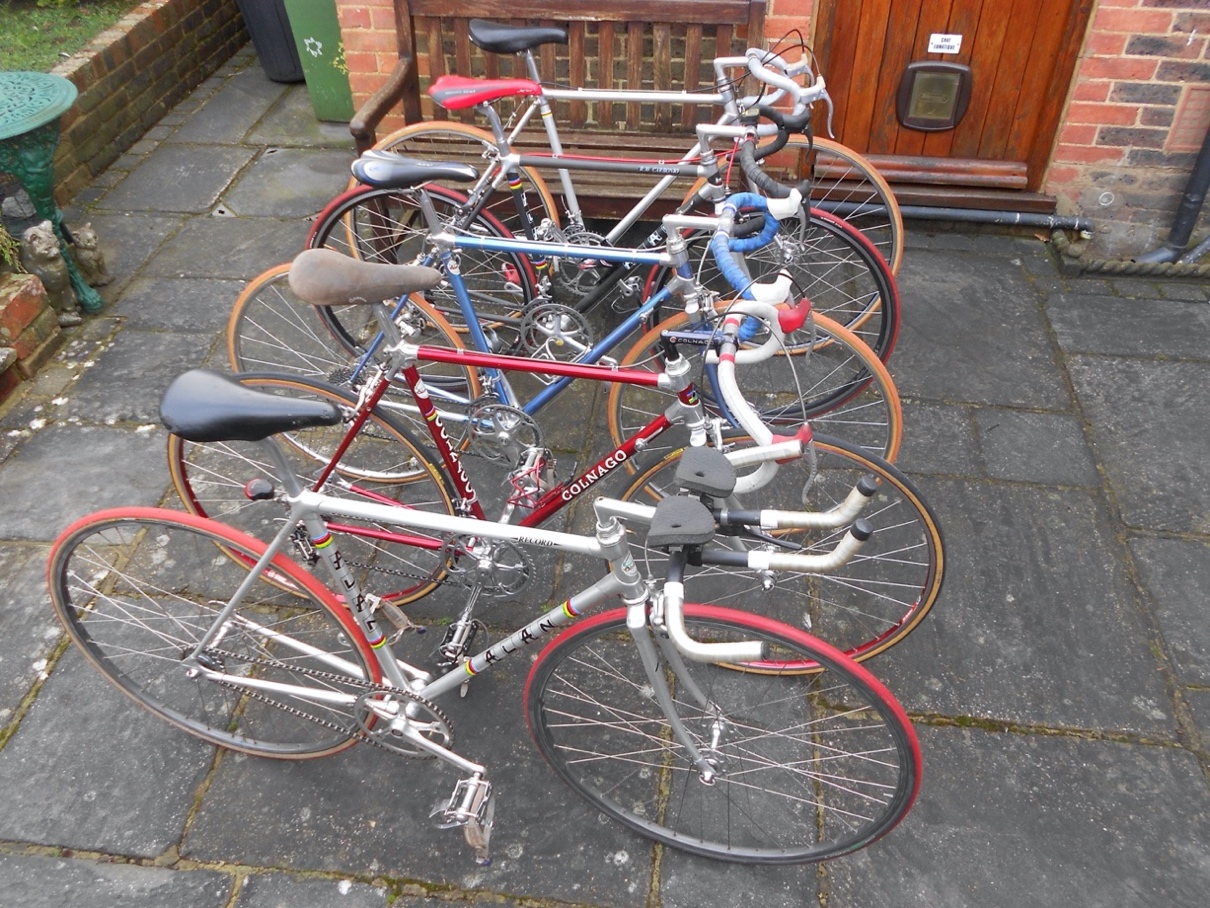
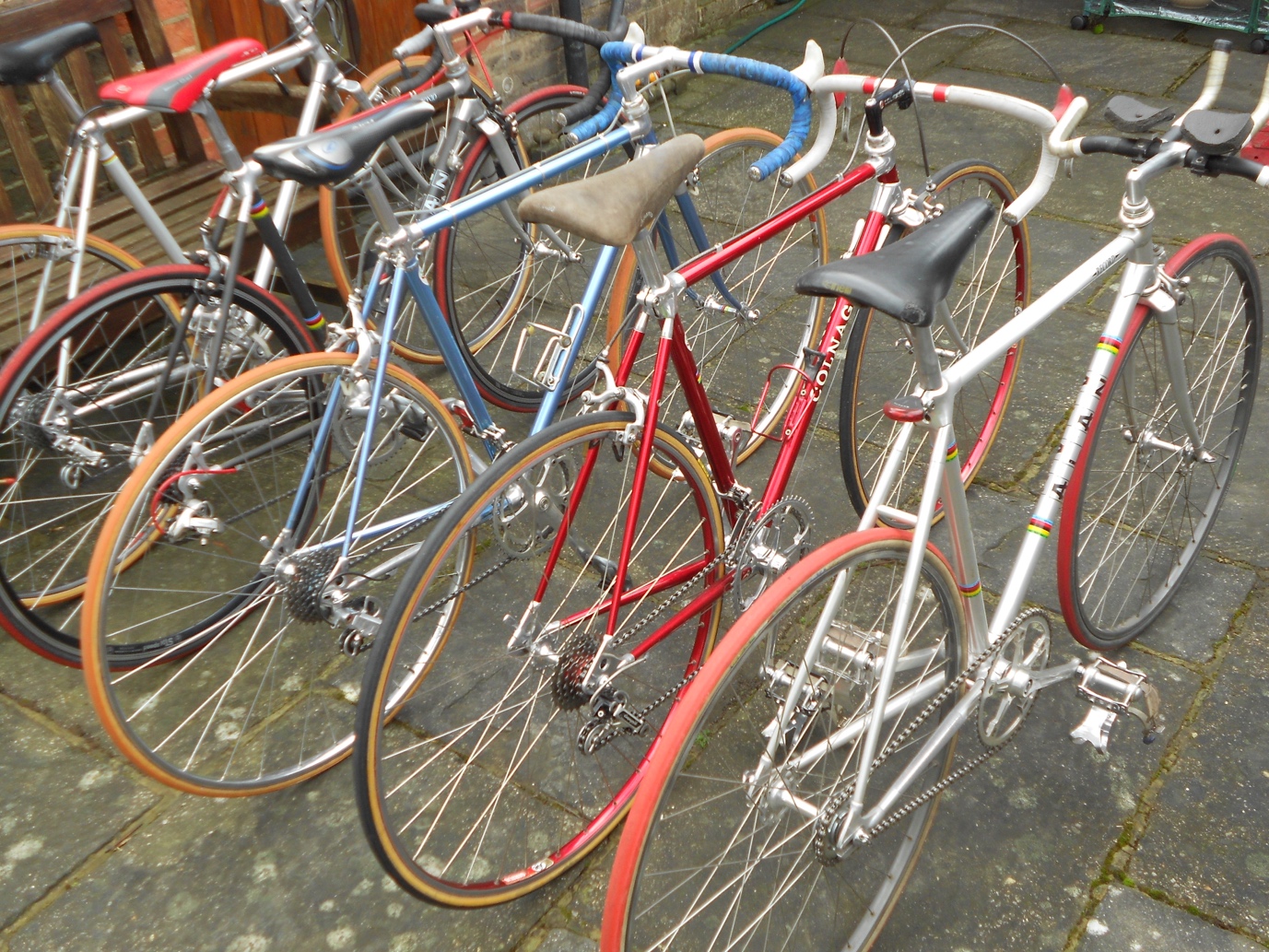
On to my little collection and the Corsa road is a red anodised Colnago badged example with Campag Super Record equipment, red anodised FIR sprints and Colnago badged stem and saddle. The blue anodised Corsa road is my everyday machine, once unloved with a broken seat stay, now TIG weld repaired with a full Campag selection.
The track bike is a Super Record frame which features slightly thicker tubing and beefier fork blades. It’s fitted with tri-bars as it has moved from track to time trial usage. The cyclo cross machine, not my original weapon I should add, is now just for show and the occasional Sunday ride as like me it’s far too old to get out of breath being abused over a muddy field. And the piece de resistance is my carbon model which was purchased from Bologna and this features slightly more modern Campag equipment and is a dream to ride, but I shall continue my quest for a titanium model!
I am now in possession of a Baines “Flying Gate” International TT frame which has a couple of interesting points. The B.B width is 66mm. Some track bikes had 65mm if I remember correctly? This frame has Oscar Egg style combo. Drop-outs, the forks carry a lamp boss and mudguards are provided for, which does not suggest it was intended for the track. The vertical tube has no lug at the top and is fillet brazed. The frame N° suggests very early post-WWII and it may be that no top lugs were available, these being special. Material scarcity may also be the reason for the track B.B. shell, also special? Someone has brazed a gear boss under the right rear drop out, which will be removed. The frame also has some pitting which has been painted over and means I can re-paint it without having problems with my conscience. Should I find evidence of Osgear braze-ons when the paint has been removed, new ones will be brazed on. Frame size is 22” wheelbase is 40”, headset is Chater-Lea (fitted with the wrong size balls! B.B has BSA standard cups but a 68 mm axle has been fitted. Both bearings have been cleaned and re-greased recently. Obviously by one what knows!
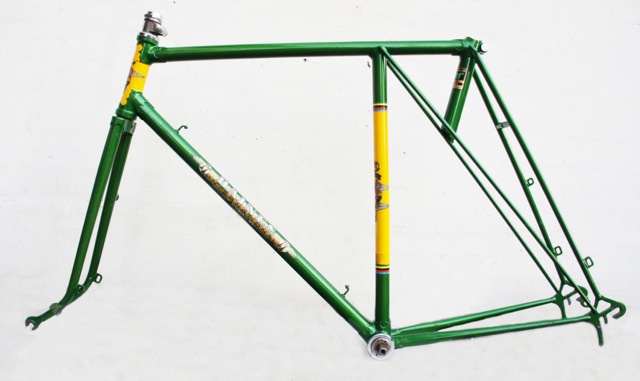
After waiting long for a Baines frame, I bought, and have recently completed, a T.J. Gate rebuild, giving myself license for several improvements to the frame. It was built 1980. A long cage Japanese 12 speed Arabesque gear gives me the range needed for my area (mountainous Austria – Ed.) and is period correct. Brakes are a little more modern, safety first, to ensure arriving at the bottom of l-o-n-g downhill rides without finger cramp. Being of short wheelbase, it rides very well but care is needed on fast descents, or it may be that I am just getting old?. I will probably keep both because a Super Champion is not going to get me far in Vorarlberg, as you know. Last year was the first time I have had to stop to admire the scenery on the Furka Pass. This year I’ll be dropping down from 34 to a 30T small chain wheel.
Bert also has this fantastic Holdsworth Sirocco/Whirlwind. All of his paint jobs are done in Italy and designed by his wife. The frame N° is 17137. According to conflicting information, the numbers 17100 – 18000 were 1953. However, I’m told that construction of the new Whirlwind frame with different lugs, was started in late 1952. This would mean that the Sirocco/Whirlwind must also have been produced 1952? (Unless it was decided to use up existing lugs??) I’m sure you know the story re the wrong spelling of Sirocco thus the name change to Whirlwind 1952, followed by the complete new model for 1953. So mine is a Whirlwind named Sirocco??
Below is detail of the lugwork on this top range Carlton International also belonging to Bert:
I have recently acquired a Mal Rees bike, frame number 3755. I assume from this the frame would have been built in 1955, possibly the 37th that year, or the 37th from a particular frame builder, or of a particular model. The build quality of the frame is exceptional and the complete bike today, after refurb, weighs only 10kgs. When I acquired it in 2019 it had a Sachs Huret mech, GB Hiduminium side pull brakes, GB stem, Giro d Italia bars, non-branded crankset, Bluemells mudguards, all of which appear to be 1950’s.Other components appear to be later replacements. I do not know if the bike was originally purchased complete or as a frame and fork only.
The bike has been refurbed for me, but, I have been unable to identify which of the Mal Rees range it might be. Would anyone be able to identify the frame from the photos below, or give any pointers that may help me do so? Shaun Underhill (Marque Enthusiast) replies:- Your Mal Rees is a ‘Chiltern’ model frame built by Wally Green at Hendon with the frame number denoting it as being the 3rd frame built in July 1955. The transfers are period correct with the signature style script.
The original owner, Mr Allen, lived in Hayes and rode with the Middlesex Road Club and therefore probably with Mal himself. I acquired the bike in 2019 from his brother, Jim Allen, also a keen cyclist with the same club, who rode a curly Hetchins. I gather there was rivalry between the two regarding who had the better bike! I also now have the Hetchins which I intend to restore in 2020. The Hetchins was badly damaged in an accident in 1978 and was repaired by Ron Rowlands who you will recognise as having been a Mal Rees workshop employee, although I believe from his invoice that he did the repair as a private job.
Anthony Adams has acquired this very unusual badged stem. Superficially the background looks like a Cinelli badge but closer comparison shows otherwise.
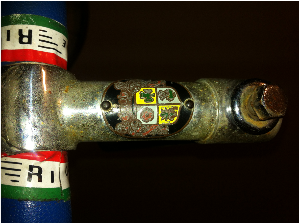
This bike was bought new by Ron Allen of Hayes, Middlesex in 1957, from the local cycle dealer, Mal Rees, in Coldharbour Lane Hayes. Ron also joined the Middlesex Road Club, which had been co-founded by Mal Rees.
During the late 1950’s, Ron, together with his elder brother Jim Allen, participated in the club time trials and sometimes acted as timekeepers. It would appear Jim was the more enthusiastic cyclist and when he went off for National Service Ron’s interest in cycling faded and he later moved away from the area. The bike remained with Jim who maintained and rode it until 2019, when the bike was passed on to its current owner.
The frame number 3755 indicates the frame was the third built in July 1955 by Wally Green of Hendon who was contracted to supply frames for the Mal Rees Chiltern model. The workmanship is of very high quality with beautifully filed Nervex lugs.
The delay between build date and sale could indicate the bike, or perhaps frame, might have been on shop display, or that Wally Green, at quieter times, built a number of frames for stock, in anticipation of future orders. It is not known if the bike was purchased complete or as a frame for the customer to fit with components of his choice.
By 2019 the bike, still with 5 gears and 27 x 1 1/4 rims, had unbranded dual lever brake controls, a modern saddle, Raleigh industries steel front wheel and Michelin World Tour tyres, all of which date from a more recent time period. A Sachs rear wheel, Huret rear mech, GB Hiduminium side pull brakes, GB stem, Primo Extra Giro Di Sicilia handlebars, white Blumels mudguards and an unbranded cottered crankset, were either original or date from a similar period. The evidently original black paintwork was faded, but there was no rust present anywhere. The transfers were legible and clearly Mal Rees, though no model name was present. The transfers, which possibly date from before 1955, were a rare variation of the “Ahead of Time” design and were positioned on the head tube and again within a gold diamond background on the seat tube.
In late 2019 the bike was refurbished by Recycle-a-Bike of Uxbridge. Having been completely stripped, the frame was shot blasted and powder coated, in light grey with black forks. The bike was rebuilt using the original handlebars and stem with a new Tifosi headset. New wheels using 700C Mavic rims were built around a pair of high flange hubs, which came from Jim Allen’s stock of parts. To reach the new rims longer drop Mafac centre pull brakes were fitted using appropriate Mafac single levers. A square taper bottom bracket was fitted to carry a Sugino Super Maxy chainset. The 5-speed gearing was retained, now using a Simplex rear mech and control lever. The chainring has 42 teeth, combined with a 14 to 28 freewheel, giving a gear range of approximately 47 to 81 inches. The bike was finished with SKS mudguards, Gatorskin tyres, a Brooks B17 saddle and black bar tape. With this specification the completed bike weighs 10 kgs.
In January 2020 this bike was ridden once again in a Middlesex Road Club event some 63 years after its first appearance at the club.
Posted: Monday 16th March 2020
This article appears in the following categories.
Upcoming Events
Whether you are looking for a gentle social meet up, or a 100-mile ride browse the community’s upcoming events and plan your next weekend outing.

